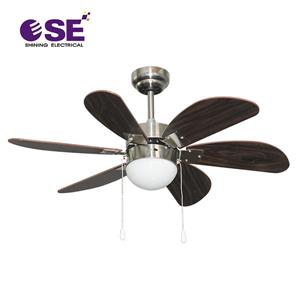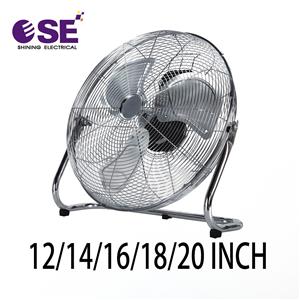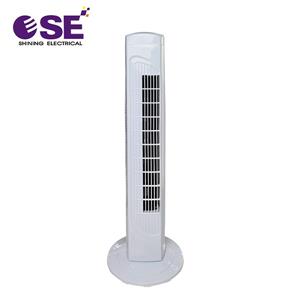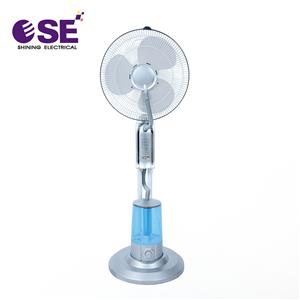Do you know the types of ceiling fan speed switches?
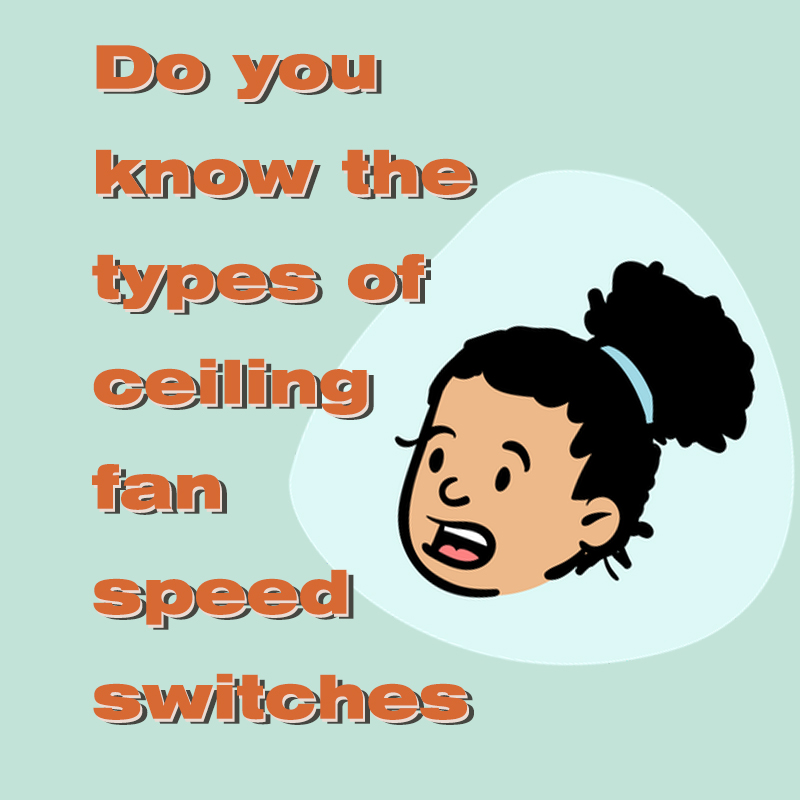
Ceiling fans generally have two types of speed switches: Stepless speed regulation switches and gear speed regulation switches.
Stepless speed regulation switches
It is a RC-triggered triac control circuit with a built-in sliding resistor. The diode and the thyristor are triggered by varying the voltage and the motor starts to run.
Principle of operation: Through the potentiometer, change its resistance value, you can change the thyristor angle size of the SCR, so that the working voltage at both ends of the motor winding changes, when the capacitor is charged, Diodes and the thyristors get conduction, so the motor gets voltage and starts to run.
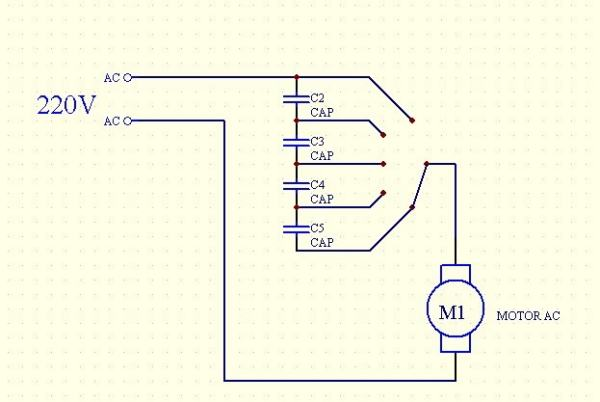
(Wiring diagram for Stepless speed regulation for ceiling fans)
Gear speed regulation switches
Gear speed regulation switches built-in single resistor. There are two types of speed regulation: inductive and capacitive.By the fan and output power is thus varied so that the speed can be regulated.
Capacitive speed control is to change the size of the capacitor capacity for speed control, while inductive speed control is to adjust the number of turns of the coil for speed control, the working principle is different.
Ceiling fans, including electric fans for domestic use, use a basic single-phase induction motor, which uses the effect of capacitance on phase to produce a specially moved by the generation of a Schott magnetic field.
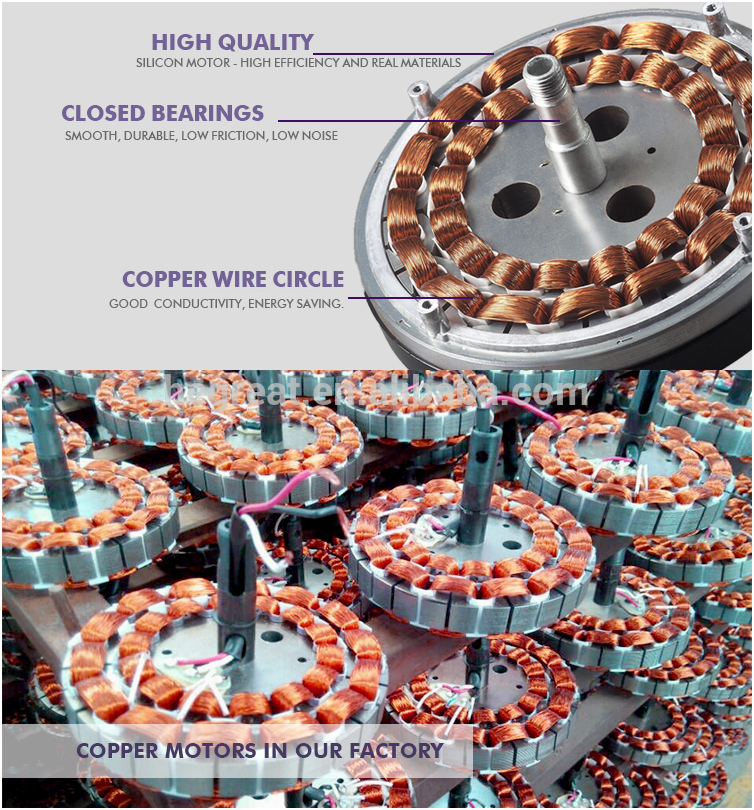
The speed regulation of fan motors is generally based on a reduced voltage, which reduces the torque of the motor, but is not a problem for motors with small loads such as fans. The motor of a fan is generally speed controlled by means of a running winding tap, while the speed of a ceiling fan is generally regulated using a separate speed governor.
Early ceiling fan speed regulators used inductors, because the inductor will generate sensory resistance when the alternating current is passed into it, using sensory resistance and motor voltage division, to achieve the purpose of speed regulation. By switching on different taps of the inductor, different speeds can be adjusted. However, due to the resistance of the inductor, a certain amount of heat is generated when using the inductor, especially when it is connected to a large inductor.
The principle of capacitive speed regulation is the same as inductive speed regulation.
The capacitor also creates a certain resistance when the alternating current is applied, this resistance is called capacitive resistance. By connecting capacitors of different capacities in series, speed control can be achieved.The difference with inductive speed control is that the current does not heat up when passing through the capacitor, so capacitive speed control is relatively better than inductive speed control.
But why didn't the early speed governors use capacitors? This is mainly due to the manufacturing process.There are many types of capacitors, early production of capacitors due to the material and manufacturing process, its volume can not do too small, as the fan speed needs a number of capacitors of different capacities, which will cause the speed governor volume increases, the cost increases.
With the development of materials and manufacturing processes, later capacitors could be made smaller, and multiple capacitors of different capacities could be made in a single package, so that both in terms of size and cost could be reduced. This is why many of the later ceiling fan speed controllers use capacitors for speed control.
So we now summarise the gear switch in terms of a capacitive governor.
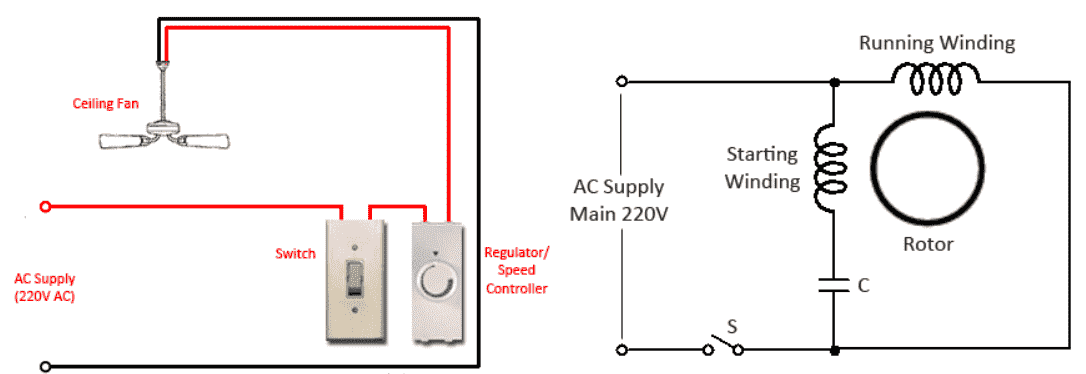
(Wiring diagram for ceiling fan capacitor governor)
Both in common:
1) Both Stepless and gear speed regulation require a speed regulation torque to cooperate with the completion.
The speed control torque is a variable potentiometer with a switch control function. The speed control is accomplished by changing the resistance value of the potentiometer by means of a switch control, i.e. by changing the charging time constant for the capacitor.
2) Both Stepless and gear speed regulation require a control panel to enable control.
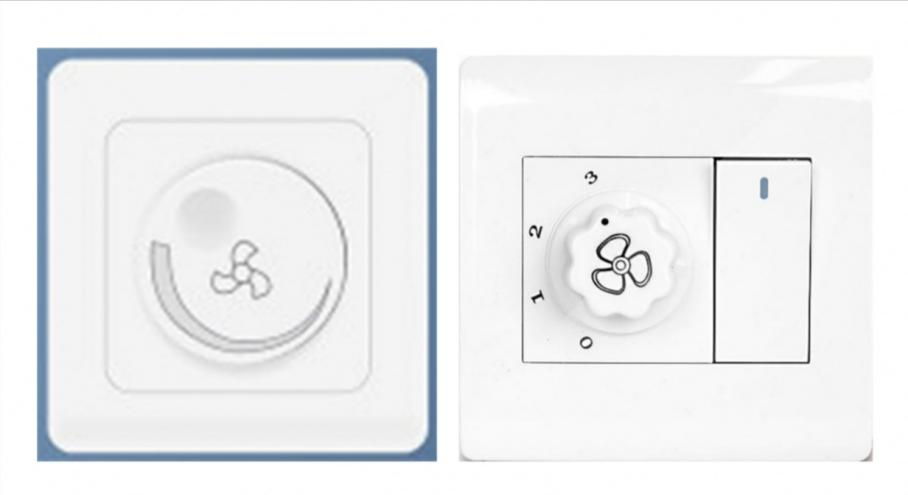
(Stepless speed regulation torque) (Gear speed regulation torque)
Both in differences:
1) Stepless speed regulation by adjusting the conduction angle to output a galvanic waveform; Gear speed regulation for current resistance dividing.
2) Stepless speed regulation is not resistant to surge shocks and is not durable; Gear speed regulation has a fixed value output and is more durable.
3) Stepless speed regulation size of the same power consumption more energy saving; Gear speed regulation heating is high and will consume part of the electric energy.
4) Stepless speed regulation is easy to use and the wind power adjustment range is flexible; Gear speed regulation is narrow and the air volume size is fixed.
5) Stepless speed regulation is simple to maintain; Gear speed regulation is difficult to repair when damaged.
The following suggestions are help you to make your choice:
1) If you value product longevity, choose a gear-regulated ceiling fan
2) The pursuit of cost-effective, to buy the best price to meet the daily needs of ceiling fans choose gear speed regulation.
3) When you don't have enough height in your space, choosing the gear speed regulation can maximum silence to be maintained. When the space is at a good height, choosing the stepless speed regulation and and you don't have to worry about the impact of noise on your life.
4) If energy saving is important, choosing a ceiling fan with stepless speed regulation can save you a fortune on your electricity bill.
5) For those who are sensitive to wind power and wish to regulate to an optimum environment, it is recommended to choose a stepless speed regulation ceiling fan.

